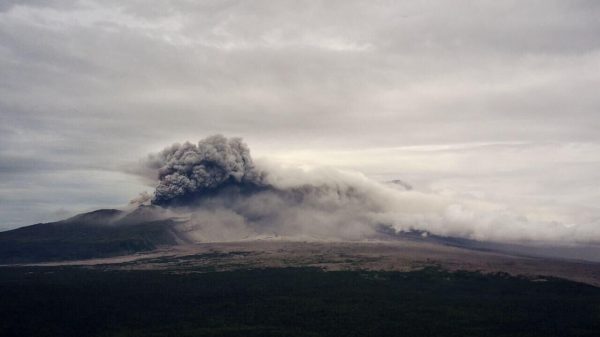The discovery of unusual gases has attracted the attention of scientists
Scientists say that the presence of two gases in the clouds of Venus may indicate the existence of life. Separate teams of scientists have found evidence of the presence of phosphine and ammonia, potential biomarkers on a planet whose surface temperature reaches 450°C.

Hot enough to melt metal and surrounded by a toxic, destructive atmosphere, Venus is considered one of the most hostile places in the solar system, writes The Guardian. But astronomers have reported the discovery of two gases that may indicate the presence of life forms hiding in the Venusian clouds.
The results, presented at a national astronomy meeting in Hull on Wednesday, confirm the existence of the corrosive gas phosphine, the presence of which on Venus has been fiercely debated.
A separate team of scientists reported the preliminary detection of ammonia, which on Earth is mainly produced by biological activity and industrial processes and whose presence on Venus, according to scientists, cannot be easily explained by known atmospheric or geological phenomena.
The so-called biosignature gases themselves are not conclusive evidence of the existence of extraterrestrial life, notes The Guardian. But the observation will heighten interest in Venus and raise the possibility that life arose and even flourished in the planet's more temperate climates in the past and persists in layers of the atmosphere today.
“It is possible that if Venus had experienced a warm and wet phase in the past, then as global warming took effect, life would have evolved to survive in the only niche left for it — clouds,” said Dr Dave Clements, professor of in astrophysics at Imperial College London.
Venus's surface temperature reaches about 450 degrees Celsius, hot enough to melt lead and zinc, the atmospheric pressure is 90 times higher than Earth's, and clouds of sulfuric acid rise above it. But at about 50 km (31 miles) above the surface, the temperature and pressure are closer to Earth's conditions—and potentially nearly habitable for very hardy microbes.
On Earth, phosphine gas is produced by microbes in oxygen-starved environments, such as in the guts of badgers and penguin feces, The Guardian writes. Other sources, such as volcanic activity, are generally so ineffective that on rocky planets the gas is considered a sign of life.
The bombshell announcement of the discovery of phosphine on Venus in 2020 sparked controversy after subsequent observations failed to confirm the discovery. Recent observations by Clements and his colleagues using the James Clerk Maxwell Telescope (JCMT) in Hawaii aim to resolve the dispute. By tracking the signature of phosphine over time, they were able to bolster evidence of the gas and found that its detection appeared to correspond to the planet's day-night cycle.
“Our results show that when the atmosphere is flooded with sunlight, phosphine is destroyed,” Clements said. “All we can say is that phosphine is present. We don't know what produces it. Maybe it's chemistry we don't understand. Or perhaps life.”
In the second talk, Professor Jane Greaves, an astronomer at Cardiff University, presented preliminary observations from the Green Bank Telescope that showed that ammonia is produced on Earth either by industrial processes or by using bacteria that convert nitrogen.
Greaves said: “Even if we confirm both of these [discoveries], it is not proof that we have found these magic microbes and they are living there today,” adding that there is “no hard data yet.”
< p>Professor Nikku Madhusudhan, an astrophysicist at the University of Cambridge who was not involved in any of the work, said that in general, proof of biosignals requires the signal to be persistent and the molecules to be convincingly associated with life.
“When it comes to Venus, both of these questions remain open,” he said. “If they do confirm the presence of phosphine and ammonia, it will increase the chances of a biological origin. Naturally, the next step will be new people who will look at this and support or put forward counter-arguments. The story will become clearer as more data becomes available.”
He added: “This all gives reason for optimism. If they can demonstrate that there are signals, good for them.»
Dr Robert Massey, deputy chief executive of the Royal Astronomical Society, said: “These are very exciting findings, but it must be emphasized that the results are only preliminary , and more work needs to be done to learn more about the presence of these two potential biomarkers in Venusian clouds. However, it is interesting to think that these findings could indicate either possible signs of life or some unknown chemical processes. It will be interesting to see what further research reveals in the coming months and years.”

























































Свежие комментарии